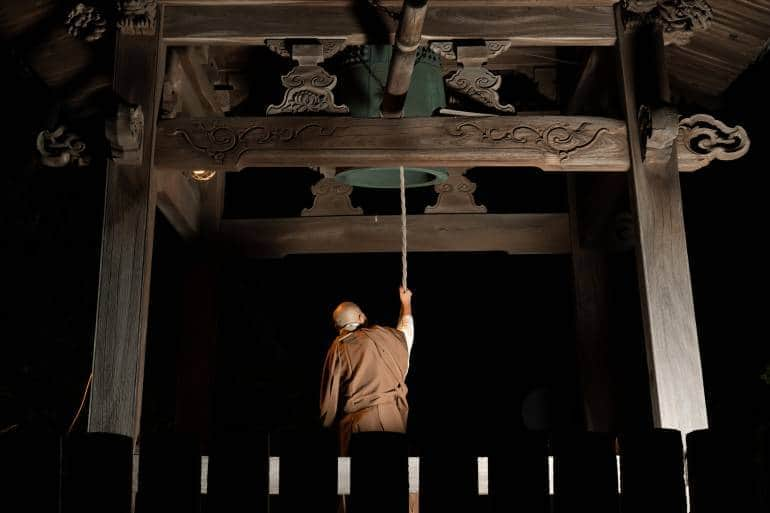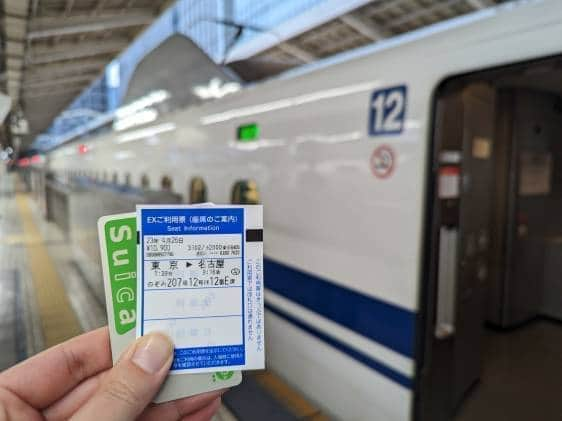In Japan, after December 25, it’s as if Christmas never happened. That’s because Christmas here is like Halloween — just another fun holiday without much traditional or religious significance. Instead, the traditional winter holiday for the Japanese is oshōgatsu (literally “first month”), or New Year.
How to celebrate Japanese New Year
Japanese New Year celebrations are quite different from typical Western ones. With celebrations extending until January 3, New Year in Japan is largely a quiet family affair. Noisy reveling, fireworks, or countdown parties aren’t the norm. In fact, most Japanese people will be at home (and if they’re not from Tokyo, in their hometowns) with their families. As busy as people are, the working populace gets a few days off for nenmatsu nenshi (literally “end of the year and beginning of the year”).

Want to try celebrating New Year the way the Japanese do? We’ll show you how. Note that you don’t have to do all these things — not everyone sticks to each and every tradition.
1. Invite good luck with auspicious decorations

Walking around Tokyo, you might see kadomatsu and shimekazari adorning shops, hotels, and other establishments. They’re not just for businesses though; they’re used as home ornaments as well.
- Kadomatsu: An ornament placed at an entrance, consisting of three bamboo shoots of different lengths (symbolizing prosperity), pine (symbolizing longevity), and plum branches (symbolizing steadfastness). They’re said to be the temporary dwelling places of gods who visit to bless humans and are usually burned after January 15.
- Shimekazari: These are hung above doors, also to invite and welcome gods of good fortune and to ward off evil spirits, and consist of shimenawa (sacred straw rope), pine, and a bitter orange (a symbol of posterity), among others.
- Kagami mochi: This offering to the gods consists of two round rice cakes stacked one on top of the other and topped with an orange. It’s placed on the household Shintō altar.
- Hagoita: A wooden paddle used to play a badminton-like game called hanetsuki, though elaborately designed ones are purely ornamental. It’s meant to hit and drive away bad luck. Sensō-ji Temple in Asakusa holds an annual hagoita market every year in December.
- Hamaya: Symbolic arrows (that destroys evil spirits), which are usually sold at shrines during the first three days of the New Year.
If you’re into crafting, some parks occasionally have crafting workshops, in which you can learn to make your own kadomatsu and/or other decorations. There isn’t really a dedicated website for parks to announce schedules of mini-events, so chancing upon one is mostly a matter of luck. Some branches of lifestyle store Tokyu Hands have also held such workshops in past years. Check their event page (in Japanese) for announcements.

2. Watch Kōhaku Uta Gassen on New Year’s Eve
Watching this long-running show, which started in 1959, has become a New Year’s Eve tradition for many Japanese families. Broadcast on the public TV channel NHK from around 7:15 p.m. until 11:45 p.m., this 4.5-hour-long program involves a musical battle (in fact, the title literally translates to “Red-and-White Song Battle”) between two teams consisting of the year’s most popular and commercially successful artists. The artists are invited by NHK, so to be on the show is considered an honor. The judges and audience then vote for the best team.
Kōhaku’s ratings are no longer as high as they once were in the ’60s and ’70s, for several presumed reasons such as the advent of the internet (and perhaps people being too preoccupied with their smartphones), but the show still has a loyal viewership base.
3. Eat traditional food like toshikoshi soba, ozoni, and osechi ryōri

Ushering in good fortune is the rationale behind many Japanese New Year traditions, so it’s not surprising that some dishes are designated as luck-bringing ones.
Toshikoshi soba (literally “year-crossing” buckwheat noodles), are served hot on New Year’s Eve to symbolize the cutting off of the year’s misfortunes, as well as wishes for good luck and long life. Meanwhile, ozoni (a savory soup with mochi), and osechi ryōri (an encompassing term for dishes or food items traditionally eaten during the New Year due to symbolic value) are eaten during New Year.
Basic ingredients (noodles, dashi, and soy sauce for toshikoshi soba; mochi and dashi for ozoni) aside, ingredients vary across households and regions.
Osechi ryōri is pretty labor-intensive, which means many families order sets in advance. These tend to be rather expensive; however, we’ve got some tips for more affordable osechi sets.
4. Joya no kane: Ring out the old year

A few minutes before New Year, some temples ring a large bell 108 times as part of a ritual called joya no kane. Why 108 times? In Buddhism, 108 is the number of earthly desires that cause humans suffering, and joya no kane is supposed to purify humans’ minds and souls for the year ahead.
In Tokyo, the temples that are famous for this include: Zōjō-ji near Tokyo Tower and Asakusa’s Sensō-ji. Both get extremely crowded, so get there early!
According to a crowd forecast on Zōjō-ji’s official site, large crowds are expected from 11 p.m. on December 31 until 2 a.m. (the next day). If you’re willing to stay up and visit between the hours of 3 a.m. and 8 a.m. on New Year’s Day, no major crowds are expected. Alternatively, you can watch the festivities via Zōjō-ji’s YouTube channel from the comfort of your home.
5. Send nengajō, New Year’s postcards
Nengajō are the Japanese equivalent of the holiday greeting card. They come in beautiful and/or cute designs, and the ones sold by Japan Post even come with lottery numbers. Winners get prizes such as cash (don’t expect much, though) or local specialties.
Although many young adults don’t send these anymore, the fact that the post office, convenience stores, and stationery shops carry a lot of these postcards indicates the market for nengajō. If your friends collect postcards, a nengajō might make their New Year.
6. See hatsuhinode, the first sunrise

Start the New Year as an early bird and catch the first sunrise! The observatories at Tokyo Tower, Tokyo Skytree, and the Tokyo Metropolitan Government Building are again holding hatsuhinode viewing events for January 1, 2024.
With the extra height, the Skytree sunrise will probably be earlier than 6 a.m. while the first sun is expected to make an appearance from the Tokyo Metropolitan Government Building observatory between 6:30 and 7:10 a.m. These events are usually only for a very limited number of participants, with names selected by lottery, and applications starting well in advance. If you can’t get a place, the Tokyo Metropolitan Government Building will reportedly be streaming it from their website.
If you’re looking for something a bit closer to nature, why not take an early-morning hike up Mt. Takao or Mt. Mitsutoge instead? Or go on a sunrise cruise from Asakusa?
7. Hatsumōde: Make your first shrine or temple visit of the year

Kick off the year by praying or wishing for prosperity, safety, and good health. Hatsumōde traditionally refers to visiting a shrine or temple from January 1-3. Any later than the first week of January, and it’s not typically considered hatsumōde anymore, even if it may be your first time stepping foot on holy ground for the year.

Any temple or shrine will do, but expect Tokyo’s popular ones — Sensō-ji Temple, Zōjō-ji Temple, Meiji Shrine, and Kanda Myōjin Shrine, in particular — to be packed.
Pro tip: Skip the hours-long queue at those spots, and instead visit a smaller, local shrine for a less stressful start to your New Year.
8. Fukubukuro and New Year sales in Japan: Shop till you drop
What, you thought retailers would miss a chance to start the year right? Fukubukuro, which literally means “lucky bag,” is a bag filled with a random selection of items, usually sold for way less than the total value of the items. It’s a clever way of clearing out the previous year’s inventory, and the mystery aspect also makes it exciting for shoppers. Surprisingly, this tradition is older than you think, as it was started by the Matsuya Ginza department store in the 1900s, although it’s unclear if fukubukuro sales during that time also took place over New Year.
In addition to fukubukuro, many shops also have New Year sales, which tend to start at or past noon on January 1st.
9. Something different: The Ōji Fox Parade

The Ōji Fox Parade is a unique way to welcome the New Year. It’s a Japanese festival, all right, but it’s not exactly a widely known tradition. Legend has it that a long, long time ago, one New Year’s Eve, some foxes dressed up as humans and visited Ōji Inari Shrine. But at this festival, it’s the other way around, as humans dressed as foxes make their way to the shrine to receive some blessings.
Anyone in traditional Japanese attire (kimono, happi, etc.) and with any fox-themed motif on them (e.g. make-up, fox ears) can join the parade, though pre-registration is required. If you can’t join the parade, no worries — it’s still a fantastic spectacle to watch. and if you want to transform into a fox, there’s a booth where you can get your face painted for a fee.
New Year in Japan: Western-style celebrations in Tokyo
Since New Year’s Eve is typically spent at home with family, countdown events are not all that common. In recent years, crowds have been gathering at Shibuya Crossing on New Year’s Eve. However, the Shibuya Crossing countdown has been canceled yet again. Instead, consider these options:

Tokyo Bay cruises
Every year, the booze boats roll out and bring in the new year with music and revelry. If that sounds like your jam, we recommend booking this one. It includes your choice of a buffet or course meal, along with champagne and live music.
Countdown parties in Tokyo
Of course, bars, nightclubs, and lounges throughout Tokyo will likely have countdown parties, too. While there are fewer major events than pre-COVID, two of the biggies still going forward are Countdown Japan and New Year Countdown to 2-24 at Womb. Those aren’t the only ones though, so check out our Tokyo New Year party guide for more.
While we do our best to ensure everything is correct, information is subject to change. This post was originally published in December 2015. Last updated in November 2023, by Maria Danuco.































